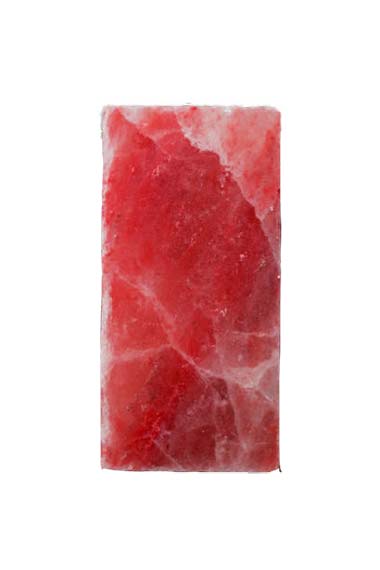A pink salt lamp is a decorative light source made from pink Himalayan salt crystals. These lamps are crafted from salt mined from the Khewra Salt Mine in the Himalayan region. The distinctive pink color of the salt is attributed to the presence of trace minerals, including iron, magnesium, potassium, and calcium.Here are key
aspects related to pink salt lamps:
1. Aesthetic Appeal:
Pink salt lamps are valued for their aesthetic appeal. The translucent quality of the salt allows the lamp to emit a soft, warm glow, creating a visually pleasing ambiance.
2. Unique Crystal Patterns:
Each salt crystal is unique, and artisans often choose pieces with interesting patterns and variations. This natural variability adds to the charm and individuality of each lamp.
3. Potential Health Claims:
Some enthusiasts and holistic wellness proponents suggest that pink salt lamps have potential health benefits, such as air purification through the release of negative ions. However, it’s important to note that scientific evidence supporting these claims is limited and often inconclusive.
4. Negative Ions and Air Purification (Claimed):
The concept behind the air purification claim is that when the lamp is heated, it releases negative ions into the air. These ions are thought to counteract the effects of positive ions, potentially attracting and neutralizing airborne pollutants. Scientific support for the effectiveness of salt lamps in air purification is debated.
5. Decorative Use:
Pink salt lamps are commonly used as decorative elements in homes, offices, and wellness spaces. Their unique appearance makes them popular for those seeking both aesthetic beauty and a potential calming atmosphere.
6. Lighting Fixtures:
The lamps typically use a small light bulb or an LED light to produce the warm glow. Some lamps come with dimmer switches, allowing users to adjust the brightness according to their preferences.
7. Care and Maintenance:
Pink salt lamps are hygroscopic, meaning they can absorb moisture from the air. It’s advisable to

keep them in dry environments, and occasional wiping with a dry cloth can help maintain their appearance.
While many people appreciate pink salt lamps for their decorative qualities, it’s essential to approach any health-related claims with caution, as scientific evidence supporting such assertions is limited. Individuals should primarily view these lamps as decorative items that may contribute to the ambiance of a space.
Why pink salt lamp popular in world?
Pink salt lamps have gained popularity worldwide for several reasons, ranging from their aesthetic appeal to the perceived potential health benefits, although it’s important to note that scientific evidence supporting health claims is limited. Here are some factors contributing to the popularity of pink salt lamps:
1. Aesthetic Appeal:
The unique and natural appearance of pink salt lamps, with their translucent pink crystals, adds a touch of beauty and warmth to interior spaces. The soft, glowing light emitted by these lamps creates a cozy ambiance, making them popular as decorative items.
2. Natural and Unique:
Each pink salt crystal is unique, with variations in color, size, and pattern. This natural diversity contributes to the individuality of each lamp, appealing to those who appreciate one-of-a-kind, handmade decor items.
3. Wellness and Holistic Trends:
Pink salt lamps are often associated with wellness and holistic living. Some individuals are drawn to the idea that these lamps can contribute to a healthier environment by potentially releasing negative ions, which are believed to have positive effects on mood and air quality.
4. Potential Health Claims:
Despite the limited scientific evidence, some people are attracted to the claimed health benefits associated with pink salt lamps. These include the release of negative ions, which proponents believe can purify the air by neutralizing positive ions and potentially improving respiratory health.
5. Calming Atmosphere:
The warm and soothing glow of pink salt lamps is believed by some to create a calming atmosphere. Many individuals use these lamps in bedrooms, living rooms, or meditation spaces to enhance relaxation and reduce stress.
6. Holistic Interior Design:
Pink salt lamps fit well into holistic interior design trends that emphasize natural materials and a connection to the earth. Their unique appearance allows them to serve both as lighting fixtures and decorative elements.
7. Social Media Influence:
The visual appeal of pink salt lamps, combined with their perceived wellness benefits, has made them popular on social media platforms. Influencers and wellness enthusiasts often showcase these lamps, contributing to their popularity and visibility.
8. Gift Items:
Pink salt lamps are often purchased as unique and thoughtful gifts. Their distinctive appearance and potential health-related claims make them a popular choice for people looking for creative and meaningful presents.
While pink salt lamps are widely embraced for their aesthetic and potential wellness attributes, it’s important for consumers to approach any health-related claims with a critical mindset and to primarily view these lamps as decorative items that may enhance the ambiance of a space.
Which make pink salt lamp unique
Pink salt lamps are considered unique due to several distinguishing characteristics:
1. Natural Variation:
Each pink salt crystal used in the lamp is unique, with variations in color, size, and structure. This natural diversity adds an individualized and distinctive touch to each lamp.
2. Himalayan Origin:
The salt used in these lamps comes from the Khewra Salt Mine in the Himalayan region. The geological conditions and specific mineral content of this salt deposit contribute to the characteristic pink color and unique mineral composition.
3. Translucency:
Pink salt lamps are known for their translucent appearance. When illuminated, they emit a soft, warm glow that enhances the visual appeal. The translucency allows light to pass through the crystal, creating a captivating effect.
4. Handcrafted Artistry:
Many pink salt lamps are handcrafted by skilled artisans. The process of shaping and carving the salt crystals is done manually, contributing to the lamp’s artisanal and handmade quality.
5. Decorative Elements:
In addition to their functional use as lighting fixtures, pink salt lamps serve as decorative elements. Their natural, earthy appearance complements various interior design styles, making them popular for adding character to spaces.
6. Hygroscopic Properties:
Pink salt is hygroscopic, meaning it can absorb moisture from the air. This property can lead to the formation of water droplets on the lamp’s surface, enhancing the visual appeal and contributing to the perception of the lamp’s uniqueness.
7. Potential Health Claims:
While scientific evidence is limited, the perceived health benefits associated with pink salt lamps, such as air purification and mood enhancement through negative ion release, contribute to their uniqueness in the market.
8. Holistic and Wellness Associations:
Pink salt lamps are often linked to holistic and wellness practices. Their presence in spaces is believed by some to promote a sense of well-being and relaxation, contributing to a unique and holistic approach to interior design.
9. Individualized Patterns:
The unique patterns and formations within each salt crystal are preserved during the carving process. This individuality adds character to the lamp, making it a distinctive decorative item.
10. Social and Cultural Significance:
Pink salt lamps are associated with the Himalayan region, and their use may carry cultural and symbolic significance. This regional connection adds to the lamps’ uniqueness and can be an appealing aspect for consumers.
While these factors contribute to the uniqueness of pink salt lamps, it’s important to note that individual preferences and beliefs about their benefits also play a significant role in their popularity and perceived uniqueness.
Looking for pink salt lamp: Click here





